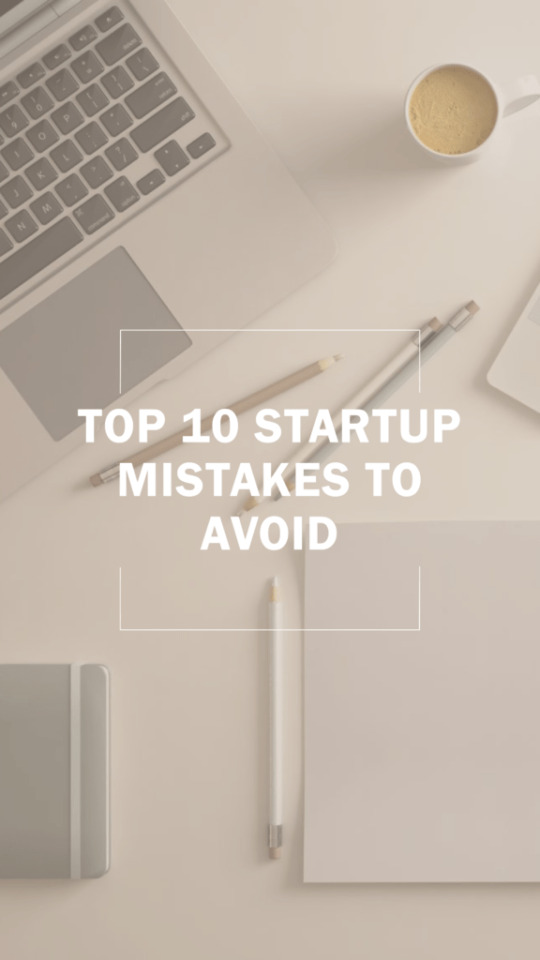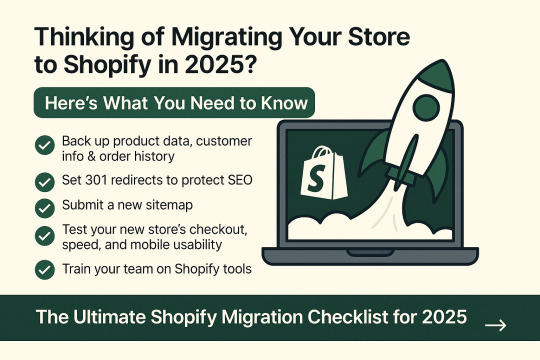#WooCommerce Checklist
Explore tagged Tumblr posts
Text
How to Turn Your Online Business Dreams into Reality


Introduction: The Digital Frontier of Entrepreneurship Selecting a Niche and Business Model: The Foundation of Success Building Your Online Platform and Brand: Your Digital Headquarters Creating High-Demand Products and Services: Delivering Value to Your Audience Implementing Effective Marketing Strategies: Attracting Targeted Traffic Diversifying Revenue Streams for Maximum Profits: Building Financial Stability Optimizing for Maximum Profitability Long-Term: Building a Sustainable Business Conclusion: Turning Dreams into Reality True successful story
Introduction: The Digital Frontier of Entrepreneurship
In today's digital age, the rise of the internet and technology has revolutionized the way we do business. It has opened a world of opportunities for entrepreneurs to start and run their own businesses online. Online businesses offer flexibility, scalability, and the potential for global reach. This comprehensive guide will provide you with a step-by-step framework for building a profitable online business from the ground up. Whether you want to start a side business or build a full-time online empire, follow this ultimate guide to turn your idea into a thriving, sustainable online business. With focus, grit, and commitment to continuous improvement, you can build the profitable online business of your dreams.
Selecting a Niche and Business Model: The Foundation of Success
The foundation of every successful online business is choosing a profitable, in-demand niche and a business model tailored to your goals. Select a niche you're passionate about; this will make creating content a breeze. Conduct thorough keyword research to assess search volume and demand. Join relevant online communities to connect with your audience and understand their needs. Evaluate direct competitors in the niche and aim for less saturated niches or unique angles. Consider affiliate marketing potential, as some niches offer higher commissions. Assess opportunities to create multiple products and monetize in diverse ways. Examples of popular online business niches include health, fitness, personal finance, pet care, tech, travel, content marketing, home design, spirituality, language learning, and more. Choose a business model that complements your niche and provides multiple income stream opportunities. Many successful online businesses incorporate 3-4 monetization models. Some of the best online business models to consider include: 1. Blogging: Make money with display ads, affiliates, and branded products. 2. Online Courses: Sell your knowledge and expertise as courses. 3. Dropshipping: Curate and sell products without inventory. 4. Affiliate Marketing: Earn commissions promoting other companies' products. 5. Information Products: Sell online books, templates, checklists, and more. 6. Virtual Services: Provide consulting, freelancing, coaching, or other services. 7. Subscription Membership Site: Offer exclusive content or tools for a monthly fee. 8. E-commerce Store: Sell physical products, merchandising, and more. Your choice should complement your niche and offer multiple income streams. Many successful online businesses incorporate 3-4 monetization models.
Building Your Online Platform and Brand: Your Digital Headquarters
Your website or blog will serve as the headquarters for your online business. Invest time upfront in creating an optimized, professional-looking platform. Purchase a domain name that matches your brand, ideally a .com if available. Select reliable web hosting with optimal speed and uptime. Install WordPress or ecommerce platforms like Shopify or WooCommerce. Design an on-brand, mobile-responsive theme that conveys your style. Include essential pages like Home, About, Contact, Services, Blog, and Shop. Set up email marketing and analytics to capture leads and track traffic data. Create visually branded assets such as logos, color palettes, fonts, and graphics. Ensure a cohesive user experience across all touchpoints. If you lack web development skills, consider hiring a freelance designer to bring your vision to life. Continually optimize your website for higher traffic, leads, and sales over time. This includes technical enhancements, user experience improvements, and page speed optimizations.
Creating High-Demand Products and Services: Delivering Value to Your Audience
The key to running a profitable online business is consistently creating products and services that deliver extreme value to your audience. Popular digital products you can create include online courses, eBooks, guides, checklists, software, premium memberships, virtual events, video tutorials, templates, and more. When brainstorming products, look for opportunities to simplify lives, save time, educate, entertain, or improve outcomes for your target customers. Leverage your expertise and tap into the skills of others to create premium offerings. High-value services like consulting, freelancing, coaching, and more can also be extremely lucrative. Promote your services through your website and social platforms. Structure your offerings to passively earn income over time, such as online courses that continually generate sales vs. 1-on-1 services that require ongoing effort. Deliver an excellent user experience across your products and relentlessly optimize based on feedback to foster raving fans who refer others.

Implementing Effective Marketing Strategies: Attracting Targeted Traffic
Once your online platform and offerings are ready, it's time to start attracting targeted traffic using proven marketing tactics. A diverse marketing mix is key. Some of the top strategies include: 1. Content Marketing: Create engaging blog posts, videos, and visual content. 2. SEO: Optimize your website for search engines through on-page optimization and link-building. 3. PPC Ads: Utilize platforms like Google, Facebook, Instagram, and YouTube for pay-per-click advertising. 4. Email Marketing: Build your email list with lead magnets, newsletters, and automation. 5. Social Media Marketing: Employ organic and paid tactics to engage your audience. 6. Affiliate Marketing: Recruit others to promote your products and earn commissions. 7. Influencer Partnerships: Collaborate with relevant influencers in your niche. 8. Live Events: Host local meetups or virtual events to connect with your audience. 9. Podcast Guest Appearances: Grow your authority and reach new audiences. 10. Retargeting Ads: Remarket to previous site visitors across the web. Start by focusing on 1-3 core channels, then expand your efforts over time. Pay-per-click and social ads can help quickly scale an audience, while SEO and content creation tend to be most cost-effective in the long-term. Leverage tools like Google Analytics, Facebook Business Suite, and landing page builders to optimize results across all campaigns. Don't hesitate to enlist help from digital marketing agencies and specialists.
Diversifying Revenue Streams for Maximum Profits: Building Financial Stability
Generating multiple streams of revenue is key for building a highly profitable online business. Diversification reduces risk and provides stability as each income channel goes through ups and downs. Here are some of the most lucrative online business revenue models: 1. Product/Service Sales: Your core monetization stream. Ensure competitive yet profitable pricing. 2. Advertising: Display ads, sponsorships, native advertising, etc. Set up Google Ad Manager. 3. Affiliate Marketing: Promote other company's products for commissions. Join affiliate networks. 4. Memberships/Subscriptions: Offer exclusive benefits, content, or tools for a monthly fee. 5. Events: Sell tickets for online or in-person events and training programs. 6. Dropshipping: Curate and sell products without holding inventory. 7. Physical Merchandise: Sell branded products with print-on-demand services. 8. Consulting/Freelancing: Sell your skills and expertise through 1-on-1 services. 9. Tip Jars/Donations: Allow fans to tip or donate to show support. Aim to generate income from both active efforts like service packages and passive streams like online courses that earn as you sleep. Automate processes wherever possible to scale income without increasing workload proportionally. Reinvest profits back into growing your business and diversifying income channels to create an unstoppable snowball effect over time.



Optimizing for Maximum Profitability Long-Term: Building a Sustainable Business
Launching a profitable online business is an important first step. However, creating systems and processes that enable high profitability long-term is vital for sustaining growth. Here are some best practices for optimizing operations and profitability: - Obsessively track KPIs and metrics for all marketing channels and funnels. Analyze data to optimize underperforming areas. - Create excellent customer support systems. Provide prompt, personalized support to increase satisfaction and referrals. - Automate repetitive tasks wherever possible with tools like Zapier. Automate lead collection, customer onboarding, analytics, inventory management, etc. - Systematize your product creation process to quickly test and validate new product ideas, then scale those that resonate. - Document your systems and processes so future hires can replicate them. This includes SOPs for customer service, product fulfillment, etc. - Build a skilled team over time by hiring virtual assistants, freelancers, agencies, and eventually full-time employees. Focus on higher-level strategy. - Maintain work-life balance as a long-term entrepreneur. Make time for adequate rest, leisure, and self-care to avoid burnout. By staying agile, embracing innovation, and relentlessly providing value to your audience, you can build an online business that delivers meaningful income for decades to come.



Conclusion: Turning Dreams into Reality
Starting and running a profitable online business takes consistent effort and persistence. However, by zeroing in on a niche, selecting the right model, crafting high-value offerings, implementing diverse marketing strategies, diversifying your revenue streams, and optimizing for maximum efficiency, you can build an online business that provides freedom and fulfillment for years to come. Remember to stay obsessively focused on understanding and serving your target audience. Combine your passion with grit, resilience, and creativity. With the right mindset and business foundations in place, you have immense potential to build a thriving online business that stands out and makes a lasting impact. The time to stop dreaming and start taking action is now. Follow this comprehensive guide to turn your online business idea into reality, step-by-step. You can build an online empire that allows you to live life on your terms. The possibilities are truly endless if you commit to continuous learning and improvement. Let this guide spark the fire within and set you on the path to online business success. Start pursuing your online entrepreneur dream today.


True successful story
To illustrate the principles and strategies discussed in this comprehensive guide, let's delve into the inspiring true story of Pat Flynn and his online business, Smart Passive Income. Smart Passive Income - About Pat Flynn Background: Pat Flynn was once an aspiring architect who unexpectedly found himself laid off during the economic downturn in 2008. Faced with uncertainty, he turned to the online world to seek alternative income sources. His journey began with a blog, which he aptly named Smart Passive Income (SPI). Selecting a Niche and Business Model: Pat recognized that there was a significant demand for information about creating online businesses and generating passive income. He was passionate about sharing his experiences, both successes and failures, and helping others navigate the world of online entrepreneurship. Pat's chosen niche was personal finance, but his business model extended beyond blogging. Building Your Online Platform and Brand: Pat invested in creating a professional-looking platform for SPI. He purchased a domain name, set up reliable web hosting, and designed an appealing website. His commitment to providing value was evident through the content he produced on his blog, podcast, and YouTube channel. His brand, Smart Passive Income, became synonymous with transparency, authenticity, and actionable advice. Creating High-Demand Products and Services: One of Pat's significant successes came from his creation of online courses and informational products. He developed courses on topics like email marketing, affiliate marketing, and podcasting, leveraging his expertise and audience trust. These products delivered immense value to his audience and contributed significantly to his income. Implementing Effective Marketing Strategies: Pat's marketing strategy was built on content marketing, podcasting, and email marketing. He consistently produced high-quality blog posts and podcasts, which not only attracted a dedicated audience but also positioned him as an industry expert. His email list grew as he offered valuable lead magnets and nurtured his subscribers. Diversifying Revenue Streams for Maximum Profits: Pat's income streams diversified over time. In addition to course sales, he earned from affiliate marketing, book sales, and speaking engagements. He also ventured into software development, creating tools like the Smart Podcast Player. This diversification provided stability and mitigated risk. Optimizing for Maximum Profitability Long-Term: Pat was relentless in optimizing his operations. He regularly analyzed data and user feedback to improve his products and content. His team expanded as the business grew, allowing him to focus on strategic decision-making. Pat prioritized work-life balance, emphasizing family and well-being. Conclusion: Pat Flynn's journey from unexpected job loss to the creation of a successful online business, Smart Passive Income, serves as an inspiring real-life example of the principles discussed in this guide. His dedication to providing value, commitment to continuous improvement, and willingness to diversify income streams are key takeaways for anyone aspiring to build a thriving online business. Pat's story reminds us that with the right mindset and a clear vision, online entrepreneurship can lead to a fulfilling and prosperous career.


Read the full article
#business-model#guide#marketing#niche#online-business#products#profitability#revenue#services#Success
5 notes
·
View notes
Text
From Concept to Launch: The Journey with a Web Development Company in Bangalore

A website is more than a mere online presence—it forms the cornerstone of your digital identity.Whether you’re running a startup, an eCommerce store, or a large enterprise, your website needs to attract, engage, and convert visitors."Partnering with the right web development company in Bangalore can turn that vision into reality.As India’s tech capital, Bangalore is home to talented developers, innovative solutions, and cost-effective services. At WebSenor, we help businesses turn their ideas into functional, results-driven websites.Let’s explore the entire journey in detail—from concept to launch.
Understanding the Vision: Turning Ideas into a Plan
Every successful website starts with a strong vision. Before writing a single line of code, it’s important to understand your business goals and target audience.
Do you want an eCommerce website to sell products globally?
Are you looking for a portfolio site to showcase your services?
Do you need a custom web application or SaaS platform to solve a unique problem?
At WebSenor, we conduct market research, analyze competitors, and define strategies that align your website with your brand’s mission. This early collaboration ensures that your website fulfills its purpose.
Planning & Strategy Phase
A clear plan is essential for turning ideas into reality. During this stage, we:
Create a roadmap covering design, development, and timelines
Choose the right technology stack (React, Angular, PHP, WordPress, or Magento)
Define features like responsive design, eCommerce functionality, and CMS integration
Set realistic budgets and project milestones
This structured approach ensures transparency and helps avoid delays or scope changes later in the project.
Design: Crafting the Look and Feel
Your website’s design is the first thing visitors see, so it must be visually appealing and user-friendly.Our UI/UX design services focus on:
User-friendly navigation to keep visitors engaged
Responsive web design for seamless mobile and desktop experiences
Visual elements that match your brand identity
At WebSenor, we believe good design is about more than appearance—it’s about delivering an intuitive experience that builds trust and drives conversions.
Development: Building the Core
Once the design is approved, our development team brings your vision to life. Using modern frameworks like React, Angular, and PHP, we build secure and scalable websites. Services include:
Full-stack development for both front-end and back-end
eCommerce web development with Shopify, WooCommerce, or Magento
CMS development for easy content management using WordPress or Drupal
Integration of custom features to meet specific business needs
We prioritize performance, security, and scalability so your website can grow with your business.
Testing and Quality Assurance
A flawless website requires thorough testing. Our quality assurance (QA) process covers:
Cross-browser and device compatibility checks
Performance optimization for fast loading speeds
Bug fixing to ensure a smooth user experience
Security testing to protect your data and customers
We don’t just deliver a functional website—we deliver one that performs reliably under all conditions.
Launch: Bringing the Website Live
The launch phase is exciting, but preparation is key. Before going live, we follow a detailed checklist:
SEO optimization for better search visibility
Speed and performance checks to handle traffic
Final functionality tests to ensure everything works as expected
WebSenor manages the entire deployment process, ensuring a smooth and hassle-free launch. Once your site is live, it’s ready to make an impact on your audience.
Post-Launch Support & Maintenance
A website isn’t a one-time project—it requires ongoing care. Our website maintenance and support services include:
Regular updates to keep your site secure
Performance monitoring to ensure fast load times
Adding new features and scaling as your business grows
This long-term partnership ensures your website stays fresh, secure, and aligned with your evolving goals.
Why Choose WebSenor for Your Web Development Journey?
Proven Experience: Years of expertise in web application development, website redesign, and digital transformation services.
Custom Solutions: Tailored websites for startups, SMEs, and enterprises.
Expert Team: Skilled developers in full-stack development, UI/UX design, and responsive web solutions.
Client Success Stories: Businesses across industries trust WebSenor to deliver measurable results.
End-to-End Support: From concept to launch and beyond, we’re with you at every step.
Frequently Asked Questions (FAQs)
1. Why hire a website development company in Bangalore? Bangalore is India’s tech hub, offering skilled developers, competitive pricing, and access to the latest technologies, making it ideal for businesses looking for quality solutions.
2. How much does it cost to build a website? Costs depend on complexity, design, and features. WebSenor provides affordable and scalable solutions tailored to your needs.
3. How long does the website development process take? Simple websites may take 3–4 weeks, while eCommerce or complex web applications can take 8–12 weeks. Timelines are finalized during the planning stage.
4. Do you provide mobile-friendly and SEO-ready websites? Yes, all our websites feature responsive design and are optimized for performance and search engines.
5. What post-launch support do you provide?
We offer continuous maintenance, regular updates, and performance monitoring to ensure your site stays secure and runs seamlessly.
Conclusion
Bringing a website from concept to launch is a process that demands careful planning, creative vision, and technical know-how. Partnering with the right web development company in Bangalore ensures your site not only looks great but also delivers measurable results.
At WebSenor, we combine innovative design, advanced technology, and a client-first approach to create websites that grow with your business.
Ready to start your journey? Contact WebSenor today for a free consultation and bring your vision to life.

0 notes
Text
💳 UAE Payment Gateways on Website
What Every Online Store in Dubai Should Know 🇦🇪
Running an e-commerce business in Dubai?
You’ve probably asked this: “Which payment gateway should I use on my site?”
Here’s your scroll-friendly guide — no jargon, just what you need to know👇
First, What’s a Payment Gateway?
A payment gateway is the secure bridge between your website and your customer’s bank. It does all the background work:
Verifies cards ✅
Confirms payments 💰
Keeps things safe 🔐
🌍 Why It Matters in the UAE
Dubai’s shoppers are smart, diverse, and mobile-first. So your payment system needs to be:
Trusted & secure
Multi-currency friendly
Arabic + English ready
Mobile-optimized
Fast & friction-free
🏦 Top Payment Gateways in the UAE (2025 Edition)
✨ Telr – Easy integration, startup-friendly ✨ PayTabs – Great for subscriptions & recurring billing ✨ Amazon Payment Services (PayFort) – Strong brand trust ✨ Network International – Legacy provider in the UAE ✨ Checkout.com – Scalable and developer-focused
🔍 What to Look For When Choosing:
☑️ Transparent fees ☑️ Fast payouts to UAE banks ☑️ Arabic support ☑️ Mobile checkout ☑️ Integration with Shopify, WooCommerce, etc. ☑️ Real-time fraud protection
🧾 Legal Checklist Before Integration:
To use a gateway in the UAE, make sure you have:
✅ Trade license
✅ SSL certificate (your site must be HTTPS)
✅ Privacy, refund, and terms pages
✅ UAE-based bank account
🛒 Pro Tips to Boost Conversions
📱 Offer Apple Pay & card options 🌐 Add Arabic + English checkout 🖼️ Display trust badges on product pages 🚫 No forced login — let people check out as guests 📈 Test + track your payment flow often
Final Word 🎯
Your payment gateway isn’t just about tech — it’s about trust, speed, and user experience.
If you’re serious about launching or scaling your store in Dubai, choosing the right payment solution is key to real growth.
Need help building or integrating your system? 👉 Partner with Dubai’s website experts
#uae#dubai#ecommerce#paymentgateways#uaemarketing#onlinebusiness#digitaluae#tumblrblog#webdesignindubai#woocommerceuae#startupsdubai#uaebusiness
0 notes
Text
The Ultimate Checklist for Hiring a WordPress Developer

Introduction: Why Choosing the Right WordPress Developer is Crucial
In today's digital scenario, a website is not just a luxury; It is the cornerstone of a successful business. For many people, WordPress stands as an electoral platform because of the flexibility and the ridership. However, it is not enough to just have one WordPress site. Real power lies in its development and continuous maintenance. It is okay that choosing the right WordPress developer is not only important, but is absolutely important for the online appearance of your business.
A skilled WordPress developer can convert a common template into a dynamic, high performance and visually attractive site that fully matches the goals of your brand. They make sure your search is safe, sharp and customized engines, providing better visibility and user engagement. Conversely, a poorly developed site can give rise to a lot of problems, from slow loading time and security weaknesses to a disappointing user experience, which all can seriously your business reputation and lines below. Therefore, with regards to hiring a WordPress developer, corporations should decide upon quality, knowledge and a demonstrated track file.
Key Factors to Consider Before You Hire a WordPress Developer
Before starting the journey to hire WordPress developer, it is really necessary to understand the main competence and characteristics that define the professional and effective specialist.
1. Technical Skills and Expertise
The basis for any major WordPress developer lies in their technical skills. They should have a strong command of basic grid development language, including:
PHP:As the main language in WordPress, the deep knowledge of PHP is parasitically for adapted development and to understand the architecture of the platform.
JavaScript:Important for interactive elements, dynamic materials and improves the user experience.
HTML: Define the spine, structure and material on all web pages.
CSS: Important for style and ensure that your site is visually attractive and on the brand.
In addition to these basic words, specialization in WordPress-specific technologies is crucial. This includes intensive understanding of the WordPress Corps, its codes and best coding practice. A wide selection of WordPress plugins is also needed for skills in popular extensions such as WOOCOMMERCE and various functionality on e-commerce. A developer who understands that the way to effectively benefit from these devices can provide a functional and scalable website.
2. Experience with WordPress Themes and Customization
WordPress themes determine the visual appeal and the first design of your site. An experienced developer will not establish just one topic; They will have a strong understanding of the theme adaptation and ideally the ability to create a bishop's theme from scratch. This is where an experienced WordPress developer India can make a big difference. Their ability to tailor existing topics for your specific needs or creating a unique topic ensures your site provides a specific user experience, and instead of looking like another generic template, the brand represents your identity correctly.
3. Responsive Design and Mobile Optimization
In today's mobile first world, responsible design is not just a trend; This is a non-conversion requirement. A significant portion of web traffic now comes from mobile devices, and search engines like Google are overwhelming on mobile -friendly websites. A skilled developer ensures that your site originally works on all devices - desktop machines, laptops, tablets and smartphones - by using your design and functionality to provide an optimal display and conversation experience regardless of screen size. This focus on responsible design affects the user's satisfaction and the site's SEO performance.
Benefits of Hiring a WordPress Developer from India
When considering where to find the top level, providing the opportunity to Hire WordPress in India is often a compelling advantage.
1. Cost-Effectiveness
One of the main benefits of choosing to Hire WordPress developer India is the cost-effectiveness without compromising on the quality. The economic landscape in India allows developers to offer competitive prices in Western countries compared to their colleagues, often with equal high, if not more, and then set skills. This can lead to sufficient savings for companies, so that they can distribute resources to other important areas of operations by providing extraordinary development services.
2. High Skill Set and Expertise
WordPress developers in India have a well -assigned reputation for their strong technical skills, extensive training and commitment to keep up to date with the latest industry trends. They are known for their skill in both adapted growth and uninterrupted plug -in, and often experienced many years working with different and complex WordPress projects for global customers. It contributes to a versatile skill set that is able to handle a wide range of wide exposure requirements.
3. Access to a Large Pool of Talent
India claims a large and fast growing pool with talented WordPress developers. This abundance of talent means that there is a comprehensive selection of businesses when they need to hire a dedicated WordPress developer or a team, which increases the chances of finding the right struggle for their specific requirements, budget and project complexity. Whether you are looking for an expert on e-commerce, custom plugins or complex theme development, the Indian market offers a number of expertise.
Steps to Take When You Hire a WordPress Developer
The hiring process for the WordPress developer must be organized and completed to ensure the best talent for your project.
1. Define Your Project Scope and Requirements
Before you start the search, you can clearly define your project. This involves creating a detailed project that emphasizes:
Goals: What do you want to achieve with this site? (For example, increase sales, generate potential customers and provide information).
Features: What functionality do you need? (Eg e-commerce, blog, contact form, membership field).
Design Specifications: Do you have guidelines for brands, favorite aesthetics or specific layouts?
Target Audience: Who are you building this website for?
It is also crucial to set a realistic budget for your task and adapt it with the expertise of the developer. A clear scope prevents misconceptions and ensures that each side are on the identical website.
2. Check the Developer’s Portfolio
A developer portfolio is a window in their abilities and style. Complete reviews of their previous work to assess the quality, complexity and aesthetics of their projects. Look for examples that match your needs, pay special attention to their customized development skills and how they integrate and optimize wordpress plugins. A strong portfolio shows their ability to produce specific results.
3. Evaluate Technical and Soft Skills
While technical skills are important, do not ignore soft skills. Effective communication, ability to solve the problem and collaborative mentality are also important for project execution. During the interview, consider their ability to explain complex technical concepts in a way, their approach to challenges and their desire to work as part of your team.This double ranking ensures that you not only rent a code, but are a real partner in your project.
Should You Hire a Dedicated WordPress Developer or a Freelancer?
The choice between a dedicated wordpress developer and a freelancer depends a lot on the species and long -term needs of your project.
1. Advantages of Hiring a Dedicated WordPress Developer
For large, more complex projects or ongoing needs for websites, the benefits to hire dedicated WordPress developers are important. A dedicated developer provides full time commitment, which ensures frequent progress and focuses on your project. They become an integral part of your expanded team, which gets your business goals and deep understanding of the brand. This often leads to more analog solutions for future development, ongoing support and more scalability. Long -term partnership with dedicated developers promotes continuity and efficiency.
2. Pros and Cons of Hiring a Freelancer
Freelancers provide flexibility, often come with low starting costs, and can provide fast turning operations for small, well -defined functions. They are ideal for closed projects or specific reforms. However, there may be potential risks, such as variation in availability, inconsistent communication if they are juggled with many customers and short -term commitment. For important or developed projects can only rely on a freelancer to offer challenges.The choice between a dedicated developer and a freelancer depends a lot on the specific and long -term needs of your project.
When to Hire a WordPress Plugin Developer
WordPress plugins development are important for increasing the site's functionality, but sometimes there are not enough solutions.
1. Custom Plugin Development for Your Website’s Specific Needs
While thousands of free and premium plugins are available, your site may have unique requirements that existing plugins cannot quite address. This is when you need to hire WordPress Plugin Developer competence. A custom plugin can be developed with scratches to fully integrate with specific workflows on your site, ensure optimal performance and avoid conflicts that can introduce generic plugins. This level of customization ensures that your site is really unique and is completely in line with your business processes.
2. Updating and Maintaining Plugins for Better Performance
Plugins require regular updates to maintain security, compatibility and optimal performance. Ignoring these updates can lead to weaknesses, fractures and slow loading time. A dedicated WordPress plugin developer can help with the ongoing support, to ensure that all plugins are kept up to date, which arises for any question, and uses a security update. This active approach protects the integrity of your site and ensures a spontaneous user experience.
Where to Find the Best WordPress Developers
Finding the right talent requires knowing where to look.
1. Platforms to Hire WordPress Developers
Several online platforms serve as excellent resources to hire WordPress programmers India and globally:
Upwork & Freelancer: These large freelance markets offer a wide range of developers with different experience levels and prices.
LinkedIn: A professional network site where you can find experienced developers and agencies.
Codeable & Toptal: These platforms focus on heavily Vemed and experienced freelance talent, often at a prize.
WordPress Jobs: Official Job Board for WordPress Community.
2. How to Hire WordPress Programmers India via Agencies
For companies looking for a streamlined and reliable recruitment process, connection to established agencies is often the best route. Agencies such as AIS Technolabs are experts in offering pre-established, experienced WordPress developers, who not only have the right to strong technical skills, but also understand different business needs. They usually offer dedicated project management, quality assurance and continuous support, reduce the workload and ensure high quality results. Taking advantage of an agency can provide protection, knowing that you work with proven professionals.
Key Questions to Ask Before Hiring a WordPress Developer
To make an informed decision, prepare a list of targeted questions for potential candidates.
1. What is Your Experience with WordPress Projects?
Go beyond a simple "yes". Ask for the study of specific case or portfolio examples on similar projects for you. Ask about their role in the projects, as the challenges faced and how they controlled him. Make sure they have experience in your industry or with the specific functionality (eg e-commerce, adapted integration) required for you. This helps to measure their practical experience and the approach to solving the problem.
2. Can You Provide a Clear Timeline and Milestones?
A professional developer will be able to clarify a clear project map, including realistic timelines for completion and defined milestones. This is important for effective project management and helps you track progress. Discuss their procedure for managing the deadline and how they handle the potential delay. The clear time limit prevents scope and ensures timely distribution.
3. Will You Offer Ongoing Support After the Project?
The development of the website is not time. Support after launch is important for maintenance, troubleshooting and updates. Ask if the developer provides the ongoing support package or service level agreement (SLAs) for long help. Understanding their commitment to support after the project can save you significant headaches under the line.
Conclusion: Make the Right Choice When You Hire a WordPress Developer
Hiring the right WordPress developer is important to succeed with your site. Whether you choose WordPress developer India -Talent or dedicated WordPress Developer's professionals, you focus on skills, experience and project optimization. Define your goals, check the portfolio and consider experts if you need to hire WordPress Plugin Developer Support. A strong WordPress site can promote your digital appearance, especially when hiring WordPress programmers India with the right expertise. For reliable results, AIS Technolabs is known for providing partners with technical, high quality WordPress solutions. View source>>https://medium.com/@ridh57837/the-ultimate-checklist-for-hiring-a-wordpress-developer-13a78bbd8f25
#wordpress developer india#hire wordpress developer#hire dedicated wordpress developer#hire wordpress plugin developer#hire wordpress programmers india
0 notes
Text
https://lucy26.hashnode.dev/the-ultimate-checklist-for-migrating-your-woocommerce-store-to-shopify
0 notes
Text
Hire the Right PHP Development Company: A Complete Business Guide
1. Snapshot: Why This Guide Matters
PHP still powers a massive portion of the modern web—from global CMS platforms (WordPress, Drupal) to custom business portals, eCommerce backends, SaaS dashboards, and API-driven applications. If you’re evaluating whether to partner with a PHP Development Company or upgrade to a more strategic engagement with a PHP Web Development Company that also offers consulting, DevOps, and performance optimization, this guide gives you a structured, point-by-point decision framework. It’s built for founders, product leaders, IT managers, and agencies that need scale without chaos.

2. When Should You Hire a PHP Development Company?
You’re scaling beyond a freelancer. Project complexity, integrations, and uptime guarantees require a team.
You need faster release cycles. Dedicated teams can parallelize feature dev, QA, and deployment.
Security & compliance pressure is rising. Payment data, healthcare data, or enterprise single sign-on needs experienced PHP engineers.
Legacy PHP app, modern expectations. Refactor, containerize, or migrate to PHP 8.x with performance improvements.
Multi-site or multi-tenant platforms. A centralized codebase, modular architecture, and shared libraries demand process maturity.
3. What a PHP Web Development Company Typically Delivers
A strong PHP Web Development Company extends beyond coding pages. Expect:
Architecture & Technical Discovery – Assess code quality, dependencies, and hosting.
Custom Module / Plugin Development – Extend CMS or frameworks (Laravel, Symfony, CodeIgniter, WordPress customizations).
API Development & Integration – REST / GraphQL endpoints, third-party SaaS, auth layers.
Performance Optimization – Caching (Redis, Varnish), query tuning, load balancing.
Scalable Hosting Setup – Containerization, CI/CD, auto-scaling cloud environments.
Ongoing Maintenance & SLA Support – Patching, upgrades, uptime monitoring.
4. PHP Tech Stack Highlights (Know What to Ask For)
Languages & Versions: PHP 8.x recommended for speed & type safety improvements.
Frameworks:
Laravel – Rapid development, built-in tooling, queue system, Blade templating.
Symfony – Enterprise-grade, modular components, strong config & testing.
CodeIgniter / Slim – Lightweight use cases.
CMS & Commerce: WordPress, Drupal, Magento (Adobe Commerce), WooCommerce.
Databases: MySQL/MariaDB, PostgreSQL, MongoDB (via abstraction layers).
Infrastructure: Nginx/Apache, Docker, Kubernetes, AWS, GCP, Azure.
When screening partners, confirm which of these they actively support in production.
5. Engagement Models: Which Works Best?
If you’re aiming for velocity + continuity, Hire Dedicated ReactJS Developers-style models in the JavaScript world have an analog in PHP: dedicated pods. (Yes, even if this is a PHP article, cross-stack thinking helps!)
6. Evaluating a PHP Development Company: 15-Point Checklist
Use or adapt this when shortlisting vendors.
Do they position themselves as a PHP Development Company or a broader full-stack shop?
Experience with PHP 8.x migrations?
Proven work in your vertical (SaaS, eCommerce, healthcare, FinTech)?
Familiar with major frameworks (Laravel/Symfony)?
Source control discipline (GitFlow, trunk-based, protected branches)?
Automated testing coverage goals?
CI/CD pipelines in place?
Containerization strategy (Docker, K8s)?
Performance metrics & load testing approach?
Code review & security audit process?
Documentation standards?
Communication cadence (daily standups, weekly demos)?
Transparency in billing/time tracking?
Post-launch maintenance plan?
References & case studies?
7. Why Work With a Custom Software Development Company USA for PHP Projects?
If your customers, compliance standards, or infrastructure choices are US-centric, partnering with a Custom Software Development Company USA can streamline legal agreements, data residency, time zone overlap, and regulatory alignment (e.g., HIPAA-ready hosting, SOC 2 reporting, GDPR for international platforms). Many US-based custom shops also maintain offshore or hybrid teams to optimize cost without sacrificing governance.
Benefits:
Easier procurement & contracting with US legal entities.
Familiarity with US-based payment gateways, tax rules, and enterprise integration tooling.
Faster stakeholder meetings in overlapping working hours.
Access to multidisciplinary teams: backend PHP, front-end JS, DevOps, QA automation, UI/UX.
8. Cost Drivers: What Influences Pricing?
Project Scope & Complexity – CRUD vs. multi-service architecture.
Framework Choice – Laravel rapid builds can reduce hours; heavy enterprise Symfony may cost more upfront but scales cleaner.
Integrations – ERP, CRM, analytics, identity, multi-currency commerce.
Security Hardening – Pen testing, compliance audits.
Hosting Model – Managed vs. your cloud.
Location Mix – Onshore USA + offshore blended rates.
9. Sample Discovery Questions to Ask Vendors
Technical Depth
Which PHP versions do you actively support in production right now?
Can you walk through a recent PHP 8 upgrade or refactor?
Architecture & Scale
How do you handle multi-tenant SaaS in PHP?
What caching or CDN strategies do you recommend for high-traffic apps?
Process & Reliability
What’s your average lead time from feature acceptance to production deploy?
Do you guarantee SLAs or uptime for managed applications?
Security & Compliance
Do you perform dependency scanning (Composer packages)?
Are you familiar with PCI-DSS, HIPAA, or SOC 2 requirements?
10. SEO Optimization Tips When Publishing Your PHP Services Page
Use your key phrase PHP Development Company in the H1 or early H2.
Include semantic variations: PHP app development, Laravel app services, enterprise PHP.
Add a comparison section vs. in-house build.
Embed internal links to related services (e.g., JavaScript front-end, cloud migration).
Publish case studies with measurable outcomes (load time, revenue impact).
Include a call to action targeting location signals: "Looking for a Custom Software Development Company USA that delivers secure, scalable PHP apps? Get a free consultation."
11. Implementation Roadmap: From Contact to Launch
Initial Fit Call – Business goals, app state, budget range.
Technical Audit – Codebase review, hosting, security, performance.
Scope Definition – Must-haves, nice-to-haves, timeline tiers.
Proposal & Contract – Model selection (fixed, T&M, dedicated team).
Kickoff & Environment Setup – Repos, credentials, CI/CD pipelines.
Sprint Execution – Iterative builds, demos, QA cycles.
Staging & UAT – Stakeholder signoff.
Go-Live & Monitoring – Deployment automation, error tracking.
Support & Optimization – Ongoing maintenance, feature roadmap.
12. Final Takeaway & Call to Action
Choosing the right PHP Development Company can dramatically reduce technical debt and accelerate delivery. Whether you need a focused PHP Web Development Company for application upgrades or a full-scale Custom Software Development Company USA with cross-discipline teams, start with clarity: business goals, code readiness, security expectations, and budget realities. When you turn that clarity into a structured vendor comparison, the right partner becomes obvious.
Ready to move? Share your project goals, current tech stack, and launch timeline—I’ll help you shortlist the best-fit PHP partners.
#php development services#php development company#php web development#phpdevelopment#php#php programming#php web development company
0 notes
Text
E‑Commerce Launch Checklist: Your Blueprint to a Successful Online Store with Jurysoft
Launching an online store is more than going live—it’s about creating a high-performing, revenue-generating experience from day one. At Jurysoft, Bangalore’s trusted e-commerce development company, we specialize in building custom digital storefronts that drive growth. To help businesses like yours, we’ve crafted this practical E-Commerce Launch Checklist to ensure your store is ready to compete—and win.
Why Does Your E-Commerce Launch Matter?
First impressions aren’t just important—they’re critical. From UX design to payment security, every detail shapes your customer’s decision to buy or bounce. At Jurysoft, we combine strategic planning with technical precision to ensure your e-commerce platform not only launches smoothly but succeeds sustainably.
The Jurysoft E-Commerce Launch Checklist
1. Set Clear Business Goals
Who are you selling to? What KPIs define your success? Our expert consultants help you define a roadmap that aligns your technology with your business strategy.
2. Select the Right Technology
Whether you need Shopify, Magento, WooCommerce, or a custom-built solution, Jurysoft helps you select the best-fit technology for your long-term growth and operational needs.
3. Ensure Mobile-First Design
With mobile commerce dominating sales, Jurysoft designs responsive and performance-optimized stores that deliver seamless experiences on smartphones and tablets.
4. Integrate Secure Payment Gateways
From UPI to credit cards and wallets, we help you integrate secure, flexible payment options backed by PCI-DSS compliance and encryption standards.
5. Optimize User Navigation
Our UX specialists craft intuitive navigation and intelligent search features, helping your customers find products faster and checkout quicker.
6. Build High-Converting Product Pages
Jurysoft’s design and content teams create visually compelling product pages with detailed descriptions, reviews, and clear calls-to-action—boosting your conversion rates from day one.
7. Simplify the Checkout Process
Reduce cart abandonment with streamlined, guest-friendly checkouts. We build efficient, transparent, and user-focused purchase journeys.
8. Strengthen SEO and Analytics
Get found on Google and track your success with on-page SEO best practices and powerful analytics integrations, all implemented by Jurysoft’s digital marketing experts.
9. Prioritize Site Security
Protect your customers and your brand. From SSL encryption to GDPR compliance, Jurysoft’s security-first approach safeguards your online store.
10. Conduct End-to-End Testing
Before launch, our quality assurance teams rigorously test your site across devices and scenarios—ensuring flawless functionality and performance.
Why Businesses Trust Jurysoft for E-Commerce Development
From startups to enterprises, Jurysoft has helped brands across industries launch e-commerce platforms that scale. We combine technical expertise, industry knowledge, and post-launch support to help you succeed in the competitive digital market.
Let Jurysoft Turn Your E-Commerce Vision Into Reality
Whether you're launching a new store or re-platforming an existing one, Jurysoft delivers complete, customized solutions to power your growth.
👉 Partner with Jurysoft – Bangalore’s Leading E-Commerce Development Experts Get Your Free Consultation Now
0 notes
Text
What Are the Best SEO Plugins for WordPress?

Search Engine Optimization (SEO) is critical for anyone who wants their WordPress website to rank well on Google and other search engines. Whether you run a blog, an e-commerce store, or a company website, optimizing your content and technical aspects can bring in more traffic, leads, and conversions. One of the easiest ways to improve your website’s SEO is by using plugins — tools that add extra functionality to your WordPress site without the need for manual coding.
In this blog post, we’ll explore the best SEO plugins for WordPress, covering their key features, benefits, and who they’re best suited for.
1. Yoast SEO
Overview:
Yoast SEO is arguably the most popular SEO plugin for WordPress. With millions of active installations, it’s often the go-to choice for beginners and professionals alike.
Key Features:
Real-time page analysis for keyword optimization
Readability check to improve content structure
XML sitemap generation
Title and meta description editor
Canonical URLs to avoid duplicate content
Why It's Great:
Yoast is extremely user-friendly. It provides color-coded indicators (green, orange, red) that make it easy to know what’s working and what needs fixing. The free version is powerful enough for most small to medium websites, and the premium version adds advanced features like internal linking suggestions and redirect management.
Best For: Bloggers, small businesses, and beginners looking for a comprehensive and easy-to-use SEO tool.
2. Rank Math
Overview:
Rank Math is gaining popularity fast as a powerful, lightweight alternative to Yoast SEO. It offers a wide range of features — many of which are free — making it highly attractive to both beginners and advanced users.
Key Features:
Clean and modern UI with step-by-step setup wizard
Google Schema Markup (rich snippets)
Unlimited keyword optimization (even in free version)
SEO analysis and scoring system
Integration with Google Search Console and Analytics
Why It's Great:
Rank Math provides advanced SEO features out of the box, and it’s highly customizable. Its deep integration with Google services offers rich insights into your website performance. Plus, the ability to optimize for multiple keywords even in the free version gives it an edge over some competitors.
Best For: Advanced users and digital marketers who want more control and insights.
3. All in One SEO (AIOSEO)
Overview:
All in One SEO has been around since 2007 and has consistently improved its feature set over the years. It offers a solid balance between ease of use and power.
Key Features:
Smart XML sitemaps
SEO audit checklist
On-page SEO optimization
Social media integration
WooCommerce SEO tools
Why It's Great:
AIOSEO is perfect for users who want a straightforward SEO setup with the ability to expand into more technical territory if needed. It also works well with WooCommerce, making it ideal for e-commerce websites.
Best For: Online stores, content creators, and business owners who want both simplicity and flexibility.
4. SEOPress
Overview:
SEOPress is a feature-rich and affordable SEO plugin that’s less well-known but extremely powerful. It offers many of the same capabilities as Yoast and Rank Math, often at a lower price.
Key Features:
All-in-one SEO management
Custom HTML/XML sitemaps
Open Graph and Twitter card support
Google Analytics and Tag Manager integration
Local SEO support
Why It's Great:
SEOPress stands out for offering a white-label option, which makes it popular among developers and agencies. Its clean interface and powerful features also make it a favorite for users who want control without bloat.
Best For: Agencies, developers, and cost-conscious site owners.
5. The SEO Framework
Overview:
If you’re looking for a lightweight, privacy-focused SEO plugin, The SEO Framework might be your best bet. It’s streamlined, fast, and doesn’t come with ads or upsells.
Key Features:
Preconfigured SEO settings
AI-generated titles and descriptions
Local SEO extensions
Free and premium add-ons for schema, AMP, and more
No branding or ads
Why It's Great:
Unlike other plugins that bombard you with ads and upgrade prompts, The SEO Framework provides a clean, distraction-free experience. It’s ideal for people who want minimal fuss and fast performance.
Best For: Developers, privacy-conscious users, and minimalist WordPress users.
6. Squirrly SEO
Overview:
Squirrly SEO is a plugin designed for non-SEO experts. It uses AI-powered tools to guide users step-by-step in improving their rankings and content quality.
Key Features:
SEO live assistant (real-time tips while writing)
Keyword research tool built-in
Weekly SEO audits
Google SERP checker
AI-driven strategy builder
Why It's Great:
This plugin acts almost like an SEO coach. It tells you exactly what to do while you’re writing your content and sends updates to track your progress. Great for marketers who need direction.
Best For: Bloggers, marketers, and small business owners who want hands-on guidance.
7. WP Meta SEO
Overview:
WP Meta SEO is another plugin that offers bulk editing capabilities, making it easy to optimize multiple posts and pages quickly.
Key Features:
Bulk SEO content optimization
Meta title and description editor
Image SEO features
404 error and redirection manager
Sitemap and breadcrumb support
Why It's Great:
Its focus on bulk SEO editing saves tons of time, especially if you manage a site with hundreds of pages. It also comes with a simple dashboard to track SEO metrics visually.
Best For: Publishers and website owners with large content libraries.
Final Thoughts
Optimizing your WordPress site starts with choosing the right SEO plugin. Whether you're new to SEO or managing multiple websites, there’s a plugin tailored for your needs:
Yoast SEO and AIOSEO are perfect for beginners.
Rank Math suits marketers and advanced users.
SEOPress and The SEO Framework are great for developers.
Squirrly SEO gives real-time help for non-tech users.
WP Meta SEO helps manage bulk content efficiently.
The plugin you choose is a stepping stone — consistent content creation, technical performance, and usability are what truly drive SEO success.
Avanexa Technologies – WordPress Experts
Need a high-performing WordPress site? Avanexa Technologies delivers expert WordPress development and SEO integration services. From custom themes to plugin setup, we build sites that rank and convert.
Build smarter with Avanexa.
0 notes
Text
Pinswizard’s Ultimate Pinterest Tag Setup Guide: A Step-by-Step walkthrough to Boost Your Tracking & ROI

Introduction
In today’s visual-first digital landscape, Pinterest is more than a discovery platform—it’s a powerhouse for driving traffic, conversions, and brand awareness. At the heart of Pinterest marketing lies the Pinterest Tag Setup, an essential tool for tracking visitor actions on your website and optimizing ad performance.
1. What Is the Pinterest Tag?
The Pinterest Tag is a piece of JavaScript code you embed on your website. It collects data about visitors and their actions—such as page views, sign-ups, or purchases—and sends that data to Pinterest. This empowers advertisers to:
Build audience segments for targeted campaigns
Measure campaign performance accurately
Optimize bids automatically based on conversions
Without the tag, you’re flying blind—Pinterest ads lose clarity and purpose without reliable data.
2. Why You Should Set Up the Pinterest Tag
2.1 Precision in Tracking
Capture critical events: view content, sign-ups, add-to-cart, purchases.
Understand which pins drive the most valuable actions.
2.2 Smarter Audience Targeting
Retarget users who’ve visited key pages.
Build lookalike audiences of high-value visitors.
2.3 Optimization Efficiency
Use Pinterest's conversion-optimized campaigns.
Reduce cost-per-acquisition by automating bidding.
2.4 Better Attribution
Attribute conversions back to campaigns/pins.
Measure ROI across devices and sessions.
3. Before You Start
Before diving in, gather:
Access to your Pinterest business account
Admin-level access to your website (CMS or code)
Basic tech knowledge (or developer help)
Pinswizard also recommends setting up Google Tag Manager (GTM) if you're not comfortable editing site code directly.
4. Pinterest Tag Setup: Step-by-Step Guide
4.1 Create or Locate Your Pinterest Tag
Log into your Pinterest Business account.
Go to Ads > Conversions.
Under “Pinterest tag,” click Set up tag.
Copy the base code snippet provided.
4.2 Verify Installation
In Pinterest Ads Manager, use the Tag Helper (browser extension) to check firing on pages.
Use your browser’s “View Source” or GTM debug mode.
Wait 24 hours for Pinterest to register and validate. A green checkmark confirms activity.
5. Implementing Conversion Tracking Events
Key events:
pagevisit: logged on every page load
signup: user completes a form
Add to cart: product added to cart
checkout: purchase confirmation page
lead: lead capture submission
HIP: set up only the events essential to your business goals.
6. Analyzing Data & Optimizing Ads
Once the tag is firing correctly:
Go to Ads > Conversions — view event count and metrics.
Build Retargeting & Lookalike audiences based on site activity.
Run Conversion-optimized campaigns to let Pinterest bid for you.
Utilize attribution windows (1-day, 7-day view/click) for performance analysis.
7. Best Practices & Tips from Pinswizard
Always install the base tag sitewide first.
Track only meaningful events to prevent unnecessary noise.
Verify tag with Pinterest’s Tag Helper or GTM preview.
Wait 24–48 hours after installation to collect data.
Use a staging/test environment to verify custom GTM triggers.
Be mindful of GDPR/CCPA privacy laws—remember to include tag in your cookie policy.
8. Pinterest Tag Setup for Popular Platforms
8.1 Shopify (with GTM)
Add GTM script in Shopify admin > Online Store > Theme > Edit Code.
Follow GTM instructions above.
8.2 WooCommerce (WordPress)
Use plugins like DuracellTomi Pinterest Tag, or add base tag manually.
For events on checkout, map WooCommerce hooks to Pinterest tags.
9. Pinterest Tag Debug & Maintenance Checklist
Base tag installed on every page
Conversion (or other) events set up and validated
Tag Helper shows events firing
GTM triggers validated in preview mode
Dynamic values tested in test orders
Cookie consent banners allow tag to fire
Tag maintenance scheduled (e.g., review quarterly)
FAQ
1. What’s the difference between base tag and event tags?
The base tag collects general visitor data sitewide, while event tags capture specific actions (e.g., purchases, sign‑ups) tied to meaningful conversions.
2. Do I need GTM to set up a Pinterest Tag?
No—you can add the base and event snippets manually. But for better manageability and fewer code deployments, GTM is highly recommended.
3. Why is my "checkout" event showing zero conversions?
Potential causes:
Snippet missing on conversion page
Variables for price or currency misconfigured
Ad blocker or cookie consent blocking tag loading
Delay—Pinterest can take up to 48 hours to register events
4. Can I track dynamic product IDs or values?
Yes—via GTM, you can insert dynamic variables (like transactionTotal or productID) into the Pinterest event code.
5. Is Pinterest Tag GDPR/CCPA compliant?
Pinterest requires user consent before firing tags in regions with privacy regulations. Make sure your cookie consent banner supports Pinterest scripts.
6. How do I test the tag without impacting real data?
Use a staging environment or add a debug parameter in GTM to simulate events. Pinterest also provides Tag Helper to validate firing.
7. Can I use Pinterest Tag for retargeting?
Absolutely—you can create website-segment audiences (e.g., “visited product page” or “added to cart”) and retarget them in ads.
8. Do I need to redo the setup if I redesign my site?
Revisit the tag after redesign or codebase changes. Ensure the base tag and all event triggers are still present on the correct pages.
9. Why does Pinterest tag count differ from GA?
Different tracking methods and attribution windows. Pinterest tracks pixel-level events; Google Analytics uses JavaScript and session-based tracking. Expect discrepancies.
10. How long does Pinterest retain tag data?
Pinterest keeps data for audience building and analytics. Typically, pixel data is retained for up to 180 days, though audience recency may define targeting.
Conclusion
Successful Pinterest Tag Setup is essential for powering your Pinterest advertising with data-driven insights. With Pinswizard’s guide, you can:
Install reliably (base + event tags)
Track meaningful conversions
Analyze and optimize ads effectively
Troubleshoot common issues quickly
Ready to level up your Pinterest campaigns? Implement the tag today, fine-tune your targeting, and watch your ROI climb!
#Pinterest Management Service#Affiliate Marketing Pinterest#Pinterest Marketing Service#Benefits Of Pinterest Marketing For Interior Designers
0 notes
Text
WORDPRESS THEME
How to Choose the Best WordPress Theme for Your Niche Website
When developing a specialized website—be it a travel blog, fitness coaching platform, real estate listing portal, or an online portfolio—the selected WordPress theme must transcend mere aesthetics. It should intrinsically align with the content, target demographic, and overarching business objectives.
With an extensive array of themes available, the judicious selection of an appropriate theme can significantly enhance brand presence, whereas an ill-suited choice may impede growth. This guide outlines the methodology for selecting the optimal WordPress theme for your specific niche, ensuring the website's visual integrity and functional performance meet desired standards. 1. Comprehend Your Niche Requirements
Each specialized domain possesses distinct design, functionality, and user expectations. For instance:
A food blog necessitates robust support for recipe cards and visually engaging post layouts.
A real estate site may mandate listing features, integrated mapping functionalities, and advanced filtering options.
A photography portfolio requires high-resolution galleries and optimized image presentation.
An eCommerce site demands seamless integration with WooCommerce.
Recommendation: Develop a comprehensive checklist of essential features tailored to your specific niche. 2. Prioritize Purpose-Built Themes
Rather than commencing with a generic theme, prioritize themes explicitly engineered for your industry. These themes are inherently optimized for specific niches and frequently include pre-configured demo sites, essential plugins, and ready-to-deploy layouts.
Examples:
Travel Blog: Themes such as Soledad or Backpack Traveler
Fitness Coach: Themes like Astra Fitness Starter Template or OceanWP Fitness Demo
Law Firm: Themes including Lawyer Zone or Neve Legal
Recommendation: Utilize precise niche-specific keywords during your search, e.g., “WordPress theme for photographers,” “real estate theme for WordPress.” 3. Ensure Flexibility and Customization Capabilities
Even themes designed for specific niches should offer extensive customization options for colors, fonts, layouts, and widgets. Confirm that your chosen theme supports:
The WordPress Customizer or Full Site Editing (FSE)
Drag-and-drop page builders such as Elementor, Beaver Builder, or Gutenberg
Seamless logo integration, typographical adjustments, and custom CSS implementation, if required.
Recommendation: Select a theme that provides substantial flexibility without necessitating developer intervention. 4. Emphasize Speed, SEO, and Mobile Responsiveness
A specialized website will not achieve success if it experiences slow load times or exhibits display issues on mobile devices. Verify that your theme is:
Lightweight and optimized for rapid loading
Fully responsive across all device types
SEO-ready and compatible with leading plugins like Rank Math or Yoast.
Recommendation: Before making a final selection, evaluate theme demos using performance analysis tools such as Google PageSpeed Insights. 5. Acknowledge the Importance of Support and Updates
Regardless of your technical proficiency, access to reliable theme support can mitigate delays and frustration. Opt for themes that:
Receive consistent and timely updates
Possess overwhelmingly positive user reviews
Provide comprehensive documentation or direct support channels.
Recommendation: Premium themes frequently include 6–12 months of professional support, which is a valuable consideration for niche sites with complex requirements. Concluding Remarks
The foundation of a prosperous niche website is a theme meticulously tailored to its audience and objectives. Avoid settling for generic designs; instead, dedicate the requisite time to identify a WordPress theme that functionally and aesthetically aligns with your niche.
Your chosen theme represents the structural backbone of your website’s user experience. Therefore, exercise prudence in its selection, and observe your niche site flourish.
1 note
·
View note
Text
Ecommerce Website Checklist: 10 Essentials You Can’t Afford to Miss
In the world of online selling, your website is your storefront. Whether you're launching a fashion brand, digital products, or handmade crafts, a flawless ecommerce website is key to conversion.
Here’s a comprehensive checklist that every ecommerce entrepreneur, developer, or agency should follow.
1. Foundation: Hosting & Platform
Start with secure, fast, and scalable hosting. Recommended: WordPress + WooCommerce for total flexibility and powerful plugin support.
2. Theme Selection
Your theme should:
Be responsive
Load quickly
Support WooCommerce
Offer customization options Example: VW Ecommerce WordPress Theme – clean design, SEO-optimized, mobile-friendly.
3. Must-Have Pages
Structure matters. Include:
Shop with filters
Product pages with variation support
Cart and checkout pages
FAQ, Returns & Policies
Contact and About Us
4. Product Strategy
Add keyword-optimized product titles
Use consistent naming
Showcase products with HD images
Include customer ratings or reviews
5. Payments & Security
Enable SSL
Add multiple payment gateways
Show security badges for trust
Enable guest checkout
6. Shipping Configuration
Offer tracking
Include delivery timelines
Create international shipping rules if needed
7. SEO & Analytics
Use structured data (schema)
Write meta titles/descriptions
Connect Google Analytics & Meta Pixel
8. Customer Experience
Add live chat or chatbot
Offer customer support through multiple channels
Include clear CTAs like “Buy Now” or “Add to Cart”
9. Mobile Responsiveness
Over 60% of ecommerce traffic comes from mobile. Test your theme across screen sizes. The VW Ecommerce Theme is already optimized for this.
10. Testing Before Launch
Test every link, button, and form
Try different devices and browsers
Set up abandoned cart emails
Run a soft launch with select users
Final Thoughts
An ecommerce website isn’t just a product catalog it’s your brand’s entire experience. This checklist ensures that every element from security to design is ready to drive sales and build trust.
🔗 Need a theme that ticks all boxes? Explore the VW Ecommerce WordPress Theme today and launch your store with confidence.
0 notes
Text
Mastering Email Marketing: A Complete Guide for 2025
In today’s digitally connected world, email marketing remains one of the most powerful and cost-effective tools for businesses to connect with their audience. Despite the rise of social media, messaging apps, and AI chatbots, email continues to deliver unmatched ROI. According to Statista, there are over 4.5 billion email users globally, making it a critical channel for businesses aiming to build lasting relationships with customers.
This blog post will explore the essentials of email marketing, including its benefits, strategy building, tools, examples, and best practices to help you dominate your niche in 2025.
What Is Email Marketing?
Email marketing is the process of sending targeted emails to a list of subscribers (potential or existing customers) with the goal of promoting products, sharing updates, educating readers, or building trust.
It encompasses:
Newsletters
Promotional campaigns
Welcome sequences
Abandoned cart reminders
Post-purchase follow-ups
Re-engagement campaigns
Why Email Marketing Still Works
Despite being one of the oldest digital channels, email marketing continues to outperform many newer tools. Here's why:
1. Incredible ROI
Email marketing delivers an average ROI of $36 for every $1 spent — one of the highest in digital marketing.
2. Ownership of the Audience
Unlike social media platforms, your email list is your own asset. There are no algorithm changes to worry about.
3. Direct Communication
Email lands directly in the inbox. It’s personal, targeted, and can be automated with precision.
4. Highly Measurable
Open rates, click-throughs, conversions, bounce rates, and more — every aspect of your campaign can be tracked and optimized.
5. Mobile Friendly
More than 60% of emails are opened on mobile devices. With responsive designs, emails remain effective on the go.
How to Build an Effective Email Marketing Strategy
An effective strategy isn’t about blasting emails — it’s about building a relationship with your subscribers. Here’s a step-by-step guide:
Step 1: Define Your Objective
What do you want to achieve?
Increase sales?
Nurture leads?
Educate your audience?
Retain customers?
Your goals will shape everything — from content to frequency.
Step 2: Build & Segment Your Email List
List Building Techniques
Lead magnets: Offer something valuable (ebook, checklist, discount) in exchange for an email.
Pop-up forms: Exit-intent pop-ups can capture users before they leave.
Embedded forms: Place sign-up forms on your homepage, blogs, or checkout page.
Segmentation Examples
New vs Returning customers
Past purchase behavior
Interests (via surveys or quizzes)
Location or demographics
Segmenting increases engagement, reduces unsubscribes, and improves conversions.
Step 3: Choose the Right Tools
Here are some popular email marketing tools for 2025:
ToolBest ForKey Features
MailchimpBeginners & eCommerceTemplates, automation, analytics
ConvertKitCreatorsVisual automation builder, tagging
ActiveCampaignAdvanced automationCRM integration, behavioral emails
MailerLiteSmall businessesSimplicity, affordability
KlaviyoeCommerceDeep Shopify/WooCommerce integration
Step 4: Craft Irresistible Emails
1. Subject Line
47% of people open an email based on subject line alone.
Make it curious, urgent, or benefit-driven.
Examples:
“Don’t make this mistake in 2025…”
“50% off for the next 24 hours!”
“Your personal SEO checklist is ready 🔍”
2. Personalization
Use names, recent behavior, or location:
“Hi Ankit, your free resource is here”
“Based on your last purchase…”
3. Compelling Content
Focus on one message per email. Use:
Short paragraphs
Visuals (images, GIFs)
Clear calls to action (CTA)
4. CTA (Call-to-Action)
Every email should have ONE main action:
Buy now
Download
Register
Share
Step 5: Automate Your Email Flows
Automation saves time and boosts relevance. Common workflows:
Welcome series: Introduce your brand
Cart abandonment: Remind customers of left items
Post-purchase: Ask for reviews, upsell
Birthday emails: Offer personalized discounts
Types of Emails You Should Send
Here’s a breakdown of common email types to consider:
TypePurposeFrequency
NewsletterShare updates, tips, articlesWeekly/Bi-weekly
PromotionalAnnounce sales, launchesAs needed
EducationalProvide value, tutorialsMonthly
TransactionalOrder confirmation, shippingTriggered
BehavioralBased on user actionsAutomated
Re-engagementWin back inactive usersEvery 90 days
Metrics to Track for Success
Here are the essential metrics you should monitor:
Open Rate: % of people who opened the email
Click-Through Rate (CTR): % who clicked a link
Conversion Rate: % who took the desired action
Bounce Rate: % of undelivered emails
Unsubscribe Rate: % of people who opted out
Pro Tip: A/B test subject lines, send times, and content types to improve these numbers over time.
Best Practices for Email Marketing in 2025
✅ Be Human
Write as if you're talking to a friend. Avoid jargon or being too salesy.
✅ Mobile Optimization
Use responsive templates. 70%+ users read on phones.
✅ Clean Your List Regularly
Remove inactive subscribers to boost deliverability.
✅ Include an Unsubscribe Link
It’s legally required and builds trust.
✅ Test Before You Send
Use email previews and test emails for different devices and email clients (Gmail, Outlook, Apple Mail, etc.)
✅ Stay GDPR & CAN-SPAM Compliant
Always get explicit permission, avoid spammy subject lines, and honor unsubscribe requests.
Real-Life Examples
1. Netflix
Personalized content recommendations
Clean layout, focused CTA
Engaging subject lines like “Trending Now: Sci-fi you’ll love”
2. Grammarly
Usage stats and weekly reports
Motivation to continue using the product
CTA to upgrade to Premium
3. Headspace
Guided meditation series
Wellness tips
Warm, calm tone that matches their brand
Challenges in Email Marketing (And How to Overcome Them)
ChallengeSolution
Low open ratesImprove subject lines, personalize, test send times
Spam filtersAvoid all-caps, too many links, spammy words
High unsubscribesSegment better, deliver more relevant content
DeliverabilityUse verified domains, monitor bounce rates
BurnoutAutomate and batch content planning
The Future of Email Marketing
As AI and personalization continue to evolve, the future of email marketing looks promising. Here are upcoming trends:
AI-powered personalization (e.g., GPT-generated emails)
Interactive emails (quizzes, surveys inside emails)
Predictive sending (emails arrive when users are most likely to open)
AMP emails (mini-apps inside email)
Conclusion
Email marketing remains a goldmine for businesses willing to invest in creating value, personalization, and automation. When done right, it helps you build a loyal customer base, increase sales, and maintain brand awareness — all without being at the mercy of ever-changing social media algorithms.
So whether you’re just starting or optimizing your existing campaigns, now is the perfect time to revisit your email strategy and make it a central part of your marketing funnel.
Start building your list. Write to humans. Test, measure, and improve. Email marketing isn't dead — it's just getting smarter.
In today’s digitally connected world, email marketing remains one of the most powerful and cost-effective tools for businesses to connect with their audience. Despite the rise of social media, messaging apps, and AI chatbots, email continues to deliver unmatched ROI. According to Statista, there are over 4.5 billion email users globally, making it a critical channel for businesses aiming to build lasting relationships with customers.
This blog post will explore the essentials of email marketing, including its benefits, strategy building, tools, examples, and best practices to help you dominate your niche in 2025.
What Is Email Marketing?
Email marketing is the process of sending targeted emails to a list of subscribers (potential or existing customers) with the goal of promoting products, sharing updates, educating readers, or building trust.
It encompasses:
Newsletters
Promotional campaigns
Welcome sequences
Abandoned cart reminders
Post-purchase follow-ups
Re-engagement campaigns
Why Email Marketing Still Works
Despite being one of the oldest digital channels, email marketing continues to outperform many newer tools. Here's why:
1. Incredible ROI
Email marketing delivers an average ROI of $36 for every $1 spent — one of the highest in digital marketing.
2. Ownership of the Audience
Unlike social media platforms, your email list is your own asset. There are no algorithm changes to worry about.
3. Direct Communication
Email lands directly in the inbox. It’s personal, targeted, and can be automated with precision.
4. Highly Measurable
Open rates, click-throughs, conversions, bounce rates, and more — every aspect of your campaign can be tracked and optimized.
5. Mobile Friendly
More than 60% of emails are opened on mobile devices. With responsive designs, emails remain effective on the go.
How to Build an Effective Email Marketing Strategy
An effective strategy isn’t about blasting emails — it’s about building a relationship with your subscribers. Here’s a step-by-step guide:
Step 1: Define Your Objective
What do you want to achieve?
Increase sales?
Nurture leads?
Educate your audience?
Retain customers?
Your goals will shape everything — from content to frequency.
Step 2: Build & Segment Your Email List
List Building Techniques
Lead magnets: Offer something valuable (ebook, checklist, discount) in exchange for an email.
Pop-up forms: Exit-intent pop-ups can capture users before they leave.
Embedded forms: Place sign-up forms on your homepage, blogs, or checkout page.
Segmentation Examples
New vs Returning customers
Past purchase behavior
Interests (via surveys or quizzes)
Location or demographics
Segmenting increases engagement, reduces unsubscribes, and improves conversions.
Step 3: Choose the Right Tools
Here are some popular email marketing tools for 2025:
ToolBest ForKey Features
MailchimpBeginners & eCommerceTemplates, automation, analytics
ConvertKitCreatorsVisual automation builder, tagging
ActiveCampaignAdvanced automationCRM integration, behavioral emails
MailerLiteSmall businessesSimplicity, affordability
KlaviyoeCommerceDeep Shopify/WooCommerce integration
Step 4: Craft Irresistible Emails
1. Subject Line
47% of people open an email based on subject line alone.
Make it curious, urgent, or benefit-driven.
Examples:
“Don’t make this mistake in 2025…”
“50% off for the next 24 hours!”
“Your personal SEO checklist is ready 🔍”
2. Personalization
Use names, recent behavior, or location:
“Hi Ankit, your free resource is here”
“Based on your last purchase…”
3. Compelling Content
Focus on one message per email. Use:
Short paragraphs
Visuals (images, GIFs)
Clear calls to action (CTA)
4. CTA (Call-to-Action)
Every email should have ONE main action:
Buy now
Download
Register
Share
Step 5: Automate Your Email Flows
Automation saves time and boosts relevance. Common workflows:
Welcome series: Introduce your brand
Cart abandonment: Remind customers of left items
Post-purchase: Ask for reviews, upsell
Birthday emails: Offer personalized discounts
Types of Emails You Should Send
Here’s a breakdown of common email types to consider:
TypePurposeFrequency
NewsletterShare updates, tips, articlesWeekly/Bi-weekly
PromotionalAnnounce sales, launchesAs needed
EducationalProvide value, tutorialsMonthly
TransactionalOrder confirmation, shippingTriggered
BehavioralBased on user actionsAutomated
Re-engagementWin back inactive usersEvery 90 days
Metrics to Track for Success
Here are the essential metrics you should monitor:
Open Rate: % of people who opened the email
Click-Through Rate (CTR): % who clicked a link
Conversion Rate: % who took the desired action
Bounce Rate: % of undelivered emails
Unsubscribe Rate: % of people who opted out
Pro Tip: A/B test subject lines, send times, and content types to improve these numbers over time.
Best Practices for Email Marketing in 2025
✅ Be Human
Write as if you're talking to a friend. Avoid jargon or being too salesy.
✅ Mobile Optimization
Use responsive templates. 70%+ users read on phones.
✅ Clean Your List Regularly
Remove inactive subscribers to boost deliverability.
✅ Include an Unsubscribe Link
It’s legally required and builds trust.
✅ Test Before You Send
Use email previews and test emails for different devices and email clients (Gmail, Outlook, Apple Mail, etc.)
✅ Stay GDPR & CAN-SPAM Compliant
Always get explicit permission, avoid spammy subject lines, and honor unsubscribe requests.
Real-Life Examples
1. Netflix
Personalized content recommendations
Clean layout, focused CTA
Engaging subject lines like “Trending Now: Sci-fi you’ll love”
2. Grammarly
Usage stats and weekly reports
Motivation to continue using the product
CTA to upgrade to Premium
3. Headspace
Guided meditation series
Wellness tips
Warm, calm tone that matches their brand
Challenges in Email Marketing (And How to Overcome Them)
ChallengeSolution
Low open ratesImprove subject lines, personalize, test send times
Spam filtersAvoid all-caps, too many links, spammy words
High unsubscribesSegment better, deliver more relevant content
DeliverabilityUse verified domains, monitor bounce rates
BurnoutAutomate and batch content planning
The Future of Email Marketing
As AI and personalization continue to evolve, the future of email marketing looks promising. Here are upcoming trends:
AI-powered personalization (e.g., GPT-generated emails)
Interactive emails (quizzes, surveys inside emails)
Predictive sending (emails arrive when users are most likely to open)
AMP emails (mini-apps inside email)
Conclusion
Email marketing remains a goldmine for businesses willing to invest in creating value, personalization, and automation. When done right, it helps you build a loyal customer base, increase sales, and maintain brand awareness — all without being at the mercy of ever-changing social media algorithms.
So whether you’re just starting or optimizing your existing campaigns, now is the perfect time to revisit your email strategy and make it a central part of your marketing funnel.start building your list,hire email marketing experts. . Write to humans. Test, measure, and improve. Email marketing isn't dead — it's just getting smarter.
0 notes
Text
Essential skills for digital jobs
Digital Jobs are the future- and the future is already here.
Having a degree isn’t enough anymore. Employers are hiring for skills, not just resumes. Digital jobs are booming across industries, from marketing and design to data and customer support. With remote work on the rise, companies now hire talent based on skills, not location. Whether you’re a fresher or switching careers, building the right digital skills is your key to success.

India’s Digital Economy to Contribute One-Fifth of National Income by 2029-30, This underscores the importance of learning digital skills in the growing digital-first economy.
Core Technical Skills for Every Digital Role
No matter your industry, digital roles demand a foundation of technical know-how. These skills make you more efficient, more marketable and more likely to get hired.

Programming & Coding Basics
· HTML & CSS help with emails, website tweaks
· JavaScript adds value in marketing, analytics and automation
Example: A marketer who knows basic code can fix website issues without waiting on developers.
Data Analysis & Tools
· Excel or Google Sheets for data tracking
· Google Analytics for insights
· Notion or Airtable for organizing and visualizing
Digital Marketing Fluency
· SEO: Rank on Google (Ahrefs, SurferSEO)
· Paid Ads: Meta ads, Google ads
· Canva / CapCut: Create scroll-stopping visuals
Commit to Lifelong Learning
Digital skills evolve fast. Stay sharp through:
· LinkedIn Learning, Coursera, or YouTube tutorials
Must-Have Soft Skills to Succeed Digitally
In the digital world, soft skills are just as important as technical ones. They help you collaborate, solve problems and thrive, especially in remote or hybrid settings.
Digital Communication
Clear and concise communication via email, Slack or Zoom keeps projects on track. Poor communication leads to delays and misunderstandings.
Tools: like Grammarly and Loom, can enhance clarity.
Problem-Solving
Tech issues and remote challenges are common. Being able to troubleshoot and make quick decisions without constant supervision makes you indispensable.
Adaptability
Digital tools evolve rapidly. Staying open to change and learning new platforms shows you’re future-ready.
Emotional Intelligence
Understanding team dynamics, showing empathy and managing stress are key to building strong visual relationships.
Industry-Specific Skills That Set You Apart
Beyond the core skills, certain digital roles demand specialized knowledge. Learning these can make you stand out and increase your value instantly.

E-Commerce
Understanding how people shop online is gold. Also learn:
· Customer journey mapping
· Basic funnel building
· Platforms like Shopify or WooCommerce set up, sell, and scale your e-commerce business
Content Creation
From reels to blog posts, content drives everything. Develop:
· Video editing (CapCut, Canva)
· Storytelling and scriptwriting
· Repurposing content for different platforms
Cybersecurity Awareness
Even non-tech roles benefit from understanding:
· Data privacy basics (like GDPR)
· Strong password practices
· Recognizing phishing and scams
Example: A virtual assistant with cybersecurity awareness is more trusted with sensitive client information.
Quick Checklist & Action Plan
Now that you know the essential skills, it’s time to take action. Here’s a simple, realistic plan to help you build your digital career step by step:
Step 1: Pick One Core Skill
Choose one technical skill that aligns with your career goals- like data analysis, digital marketing, content creation or SEO.
Step 2: Strengthen One Soft Skill
Focus on a soft skill like communication, adaptability or emotional intelligence. These make a big difference in remote teams.
Step 3: Learn for 30 Minutes Weekly
Use platforms like Coursera, LinkedIn Learning or free YouTube tutorials. Learning consistently matters more than cramming.
Step 4: Apply What You Learn
Start a personal project: Create a blog, YouTube channel, or online store depending on your skill. For example, if you’re learning SEO, optimize your blog for search engines.
Freelance on the slide: Offer your services on platforms like Fiverr, Upwork or Internshala. Even small gigs help you build a client-first mindset and real results for your resume.
Shadow or Assist Someone: Reach out to professionals on LinkedIn and offer to help them for free or shadow their work. You’ll gain insights you won’t find in online courses.
Success in digital careers comes from doing, not just knowing.
1 note
·
View note
Text
📢 Thinking of Migrating Your Store to Shopify in 2025? Here’s What You Need to Know.

If you’re running an online store and considering a move to Shopify, 2025 is the perfect time to do it — but don’t dive in without a plan.
🛒 Shopify offers:
Mobile-optimized themes 📱
Built-in PCI-compliant security 🔒
Cloud scalability with 99.9% uptime ☁️
Advanced analytics + app integrations 📊
But without a solid migration checklist, you risk losing traffic, data, and customers.
✅ Here’s what to cover in your migration:
🔹 Back up product data, customer info & order history 🔹 Set 301 redirects to protect SEO 🔹 Submit a new sitemap 🔹 Test your new store’s checkout, speed, and mobile usability 🔹 Train your team on Shopify tools
📘 Want a complete, step-by-step guide?
👉 The Ultimate Shopify Migration Checklist for 2025
Whether you’re upgrading from WooCommerce, Magento, or a custom platform — this guide helps you migrate smoothly and successfully.
#Shopify#eCommerce#ShopifyTips#WebsiteMigration#OnlineBusiness#WebDevelopment#DigitalBusiness#ShopifyExperts#Shopify2025#SmallBusinessGrowth
0 notes
Text
Top WordPress Plugins 2025: Boost SEO, Speed & Security
In 2025, your WordPress website’s success heavily depends on three pillars: SEO, performance (speed), and security. With thousands of plugins available, choosing the right tools can be overwhelming. That’s why we’ve curated this list of top WordPress plugins for 2025 that are dominating the market and trusted by professionals worldwide.
Whether you're a blogger, business owner, or developer, these plugins will help you improve your site's visibility, speed up loading times, and protect your data.

Top SEO Plugins in 2025
1. Rank Math SEO
Why It’s Trending: Rank Math continues to be the leading SEO plugin in 2025, offering a perfect blend of advanced features and beginner-friendly UI.
Key Features:
AI-generated content optimization suggestions
Schema markup support for rich snippets
Real-time keyword analysis
Integration with Google Search Console
Best For: Bloggers, marketers, and eCommerce site owners who want complete SEO control.
2. All in One SEO (AIOSEO)
Why It’s Still Relevant: AIOSEO remains a solid choice for users looking for a powerful SEO suite without technical complexity.
Key Features:
Smart XML sitemap generation
SEO audit checklist
WooCommerce SEO support
Local SEO module
Best For: Business websites and local service providers.
3. SEOPress
Why It Stands Out in 2025: Lightweight, privacy-focused, and packed with pro-level features at a competitive price.
Key Features:
Google Analytics integration
Dynamic titles & meta descriptions
Custom breadcrumb support
Content analysis for keywords
Best For: Privacy-conscious websites and advanced SEO users.
Top Performance & Speed Plugins
4. WP Rocket
Why It’s a Favorite in 2025: WP Rocket is still considered the gold standard for caching and speed optimization.
Key Features:
Page caching and browser caching
Lazy loading of images and videos
Database optimization
Delay JS execution for faster Core Web Vitals scores
Best For: Site owners who want plug-and-play performance optimization.
5. Perfmatters
Why It’s Trending: Built by developers focused on performance, Perfmatters allows granular control over WordPress settings that slow down your site.
Key Features:
Disable unnecessary WordPress features
Script management (load only where needed)
Lightweight design for minimal overhead
DNS prefetching
Best For: Developers and advanced users focused on reducing site bloat.
6. FlyingPress
Why It’s Gaining Traction: An all-in-one performance plugin that combines caching, image optimization, and CDN integration.
Key Features:
Native support for WebP images
Preloading critical assets
Cloudflare and BunnyCDN integration
JavaScript deferral and compression
Best For: Performance-focused agencies and WooCommerce stores.
Top Security Plugins in 2025
7. Wordfence Security
Why It’s a Top Choice: Wordfence remains the go-to for comprehensive security monitoring and firewall protection.
Key Features:
Real-time firewall and malware scanner
Two-factor authentication (2FA)
Login attempt limits
Live traffic monitoring
Best For: Websites that require full visibility into security events.
8. Sucuri Security
Why It’s Reliable: Sucuri provides cloud-based protection with an emphasis on malware removal and DDoS mitigation.
Key Features:
Website application firewall (WAF)
Malware scanning and cleanup
Security activity auditing
CDN performance boost
Best For: Mission-critical websites and online businesses.
9. iThemes Security Pro
Why It’s Popular in 2025: Easy-to-use interface with smart recommendations makes iThemes a favorite for non-tech users.
Key Features:
Security check dashboard
Brute force protection
Scheduled malware scans
Passwordless login support
Best For: Beginners and small-to-medium business websites.
Bonus Plugins for All-Round Optimization
10. Cloudflare
Why It’s More Than Just CDN: With full integration into WordPress and real-time DDoS mitigation, Cloudflare’s WordPress plugin is a performance and security booster.
Key Features:
Automatic cache purging
Free SSL and HTTP/3 support
Web application firewall
Real user monitoring (RUM)
Best For: Websites with global traffic and a need for scalable protection.
11. Asset CleanUp
Why Developers Love It: Lets you unload unused CSS/JS files per page or post to reduce bloat and improve loading speed.
Key Features:
Page-level script management
Combine/minify CSS & JS
Remove emoji scripts, jQuery Migrate, etc.
Best For: Developers who want complete control over page load resources.
12. Imagify
Why It's Essential in 2025: As images remain the top cause of slow websites, Imagify offers AI-powered image compression.
Key Features:
Smart image resizing and compression
Support for WebP and AVIF formats
Automatic optimization on upload
Best For: Media-heavy websites and photographers using WordPress.
How to Choose the Right Plugin Mix in 2025
When choosing plugins for SEO, speed, and security, consider the following:
Compatibility: Ensure the plugin works with your WordPress version and theme.
Performance Impact: Opt for lightweight plugins that don’t add bloat.
Reputation: Always check reviews, update frequency, and support.
Free vs. Premium: Some free plugins are powerful, but premium versions often unlock mission-critical features.
Final Thoughts
2025 has brought smart, AI-powered, and performance-focused WordPress plugins that not only simplify tasks but also supercharge your site’s success. Whether you're looking to climb higher in search results, speed up your site for better UX, or fortify it against evolving threats—there’s a plugin for that.
Start with the essentials:
Use Rank Math or AIOSEO for search engine optimization
Combine WP Rocket and Perfmatters for performance
Strengthen your site with Wordfence or Sucuri
Your WordPress stack in 2025 should be lean, fast, and secure—just like the plugins above help you achieve.
0 notes
Text
Top SEO Plugins for WordPress You Should Use in 2025

Having a WordPress website is only the beginning—getting it discovered by search engines is where the real magic happens. With millions of websites competing for attention, optimizing your site for SEO is essential.
Thankfully, WordPress has an incredible range of SEO plugins that simplify the process. Whether you’re a blogger, business owner, or eCommerce seller, these tools help you rank higher, drive more traffic, and grow faster.
In this guide, we’ll cover the top SEO plugins for WordPress in 2025, how they work, and why you should consider installing them. For professional setup, a trusted WordPress Development Company in Udaipur can help you implement them flawlessly.
1. Yoast SEO
Best for: All-purpose SEO, beginners to advanced users
Yoast remains one of the most popular SEO plugins for WordPress, and in 2025, it’s better than ever.
Key Features:
On-page SEO suggestions
Keyword optimization
XML sitemap generation
Meta title and description editor
Breadcrumbs and canonical URLs
Yoast offers a real-time SEO analysis tool that guides you as you create content—perfect for bloggers and marketers alike.
Free version available | Premium from $99/year
2. Rank Math
Best for: Power users and those who want more control
Rank Math is quickly becoming the new favorite in the WordPress SEO world—and for good reason.
What sets it apart:
Track up to 5 keywords per post (even in the free version)
Built-in schema markup
Advanced redirection manager
Integration with Google Search Console & Analytics
Local SEO module for businesses
It’s powerful, lightweight, and packed with features that were previously only available in paid plugins.
Free version available | Pro from $59/year
3. All in One SEO (AIOSEO)
Best for: Business websites, eCommerce stores
AIOSEO is another long-standing plugin trusted by millions. Its latest 2025 update focuses on performance and deeper WooCommerce integration.
Highlights:
TruSEO on-page analysis
Smart XML sitemaps
SEO audit checklist
WooCommerce SEO tools
Social media integration with Open Graph and Twitter Cards
The setup wizard makes it easy to configure in minutes—ideal for beginners.
Free version available | Pro from $49/year
4. SEOPress
Best for: Developers and agencies
SEOPress is a clean, lightweight, and privacy-focused SEO plugin that rivals both Yoast and Rank Math in power.
Notable features:
Content analysis and optimization tips
Schema (structured data) integration
Broken link checker
Google Analytics and Tag Manager integration
White-label options for agencies
If you want an ad-free, developer-friendly SEO solution, SEOPress is a strong contender.
Free version available | Pro from $49/year
5. Schema Pro
Best for: Advanced schema markup
Structured data helps Google understand your content better—and plugins like Schema Pro make it easy to implement.
What it does:
Adds rich snippets (reviews, FAQs, recipes, etc.)
Supports 20+ schema types
Integrates with Elementor and other builders
Visual interface for mapping schema fields
Great for businesses and blogs that want to improve click-through rates with rich results.
Premium only | Starts at $79/year
6. Redirection
Best for: Managing 301 redirects and broken links
SEO isn’t just about adding keywords—it’s also about maintaining clean URLs. Redirection helps manage URL changes and avoid 404 errors.
Key Features:
Easy setup of 301 redirects
Monitor 404 errors
Conditional redirects based on login status, browser, or referrer
Full logging for troubleshooting
It’s a lightweight plugin that plays a big role in preserving SEO equity during site migrations or redesigns.
Completely free
7. WP Rocket (for Speed & Core Web Vitals)
Best for: SEO through performance optimization
While not an SEO plugin in the traditional sense, WP Rocket improves page speed and Core Web Vitals, both of which are crucial for SEO rankings in 2025.
Features:
Page and browser caching
File minification
Lazy loading for images
CDN support
Database cleanup
Google ranks fast sites higher, so using WP Rocket in tandem with SEO plugins is a smart strategy.
Premium only | Starts at $59/year
8. Broken Link Checker
Best for: Fixing dead links that hurt SEO
Broken links frustrate users and damage your SEO. This plugin scans your posts, pages, and comments to detect and fix them.
Benefits:
Scans internal and external links
Notifies you via dashboard and email
Offers quick editing interface
It’s a must-have for content-heavy websites and blogs.
Free version available
9. Google Site Kit
Best for: Integrating Google’s tools into WordPress
Google Site Kit brings essential SEO tools right into your WordPress dashboard.
What it connects:
Google Search Console
Google Analytics
PageSpeed Insights
Google AdSense
Tag Manager
Use it to monitor traffic, performance, and crawl errors in one place—no code needed.
Completely free
10. Squirrly SEO
Best for: Beginners and content creators
Squirrly is like having an SEO coach inside your dashboard. It’s ideal for non-technical users who want real-time tips as they write.
Features:
SEO Live Assistant with suggestions
Keyword research built-in
Weekly site audits
Competitor analysis
Google SERP checker
It also helps you optimize content for both users and search engines.
Free version available | Pro from $71.99/year
Final Thoughts
If you’re using WordPress, you already have a head start in SEO—but the right plugins can elevate your site’s performance, visibility, and traffic dramatically.
0 notes